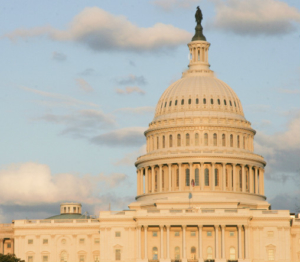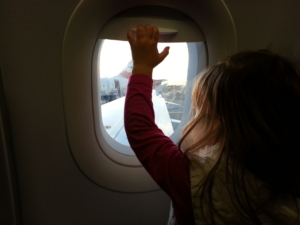Congressmen push to make family travel more accessible
Every now and again, our elected officials actually do something I can get behind. Case in point: the FAA Reauthorization Bill, which includes a push to make into law new rules that would require airlines to allow families to guarantee seats together on planes.
In other words, the legislation aims to make traveling with children more accessible for everyone.
I don’t just support this because of my involvement with the Family Travel Association (though, I admit, the FTA will be supporting this legislation in a HUGE way). I support the bill because I’ve been separated from my kids on a flight before, and it’s about time we did something to prevent it from happening to other families.
Technically, the bill is H.R. 3334. The formal name for it is the “Families Flying Together Act.” It’s been introduced before. And, much like that first, time, the legislation is being championed by U.S. Representatives Rodney Davis (R-Ill.) and Jerrold Nadler (D-N.Y.).
H.R. 3334 is expected to be added as an amendment to the FAA Reauthorization Bill, which the House Transportation and Infrastructure Committee will consider later this month. If all goes well, both 3334 and the bill itself will be voted into law later this year.
There’s a lot of work to do before then, though. First is convincing lawmakers that this is something which warrants attention. Next is inspiring other traveling parents to get behind the effort as well. To this end, Davis and Nadler have been circulating a letter to their colleagues outlining the merits of their addendum to the big bill. Here’s a (lengthy) snip from that letter:
As airlines change policies and increase fees for a variety of basic services, it is becoming more difficult for families with small children to sit together on commercial flights. There are increasing reports of parents being separated from their children when they arrive to board an aircraft. Often the only ‘recourse’ is to rely on another passenger to voluntarily change seats. This inconvenience for everyone involved is complicated by the fact that a passenger might have to vacate a seat for which they [sic] paid a premium in order to allow a parent to sit next to their [sic] child.
This scenario also has the potential of being unsafe and traumatic for the families involved. It is not in a child’s best interest, nor does it serve the other passengers on board, to allow small children to be seated alone and separated from their parents on a flight. It is simply common sense to ensure a small child does not sit unattended, next to strangers, on an airplane.
H.R. 3334, the Families Flying Together Act, would require each air carrier to establish and make publicly available on their [sic] website a policy ensuring that families purchasing tickets are seated together to the greatest extent practicable. Further, it would also require airlines to notify passengers traveling with small children if seats are not available together at the point of purchase. These common-sense reforms would increase transparency for consumers and vastly improve the flying experiences of families with small children.
Flight passengers deserve predictability and transparency, particularly for something as basic as a seating assignment. H.R. 3334 does so in a way that prioritizes the safety and well-being of small children without being overly burdensome for airlines.
The issue at hand is clear. For the first time in a while, we actually might be able to do something about it. Now it’s time to come together and do something about it. If you want to get involved, call your representative and ask him/her to support H.R. 3334. At the very least, share this post with other traveling parents to raise awareness of this golden opportunity to make a change. Thanks in advance for your support.




